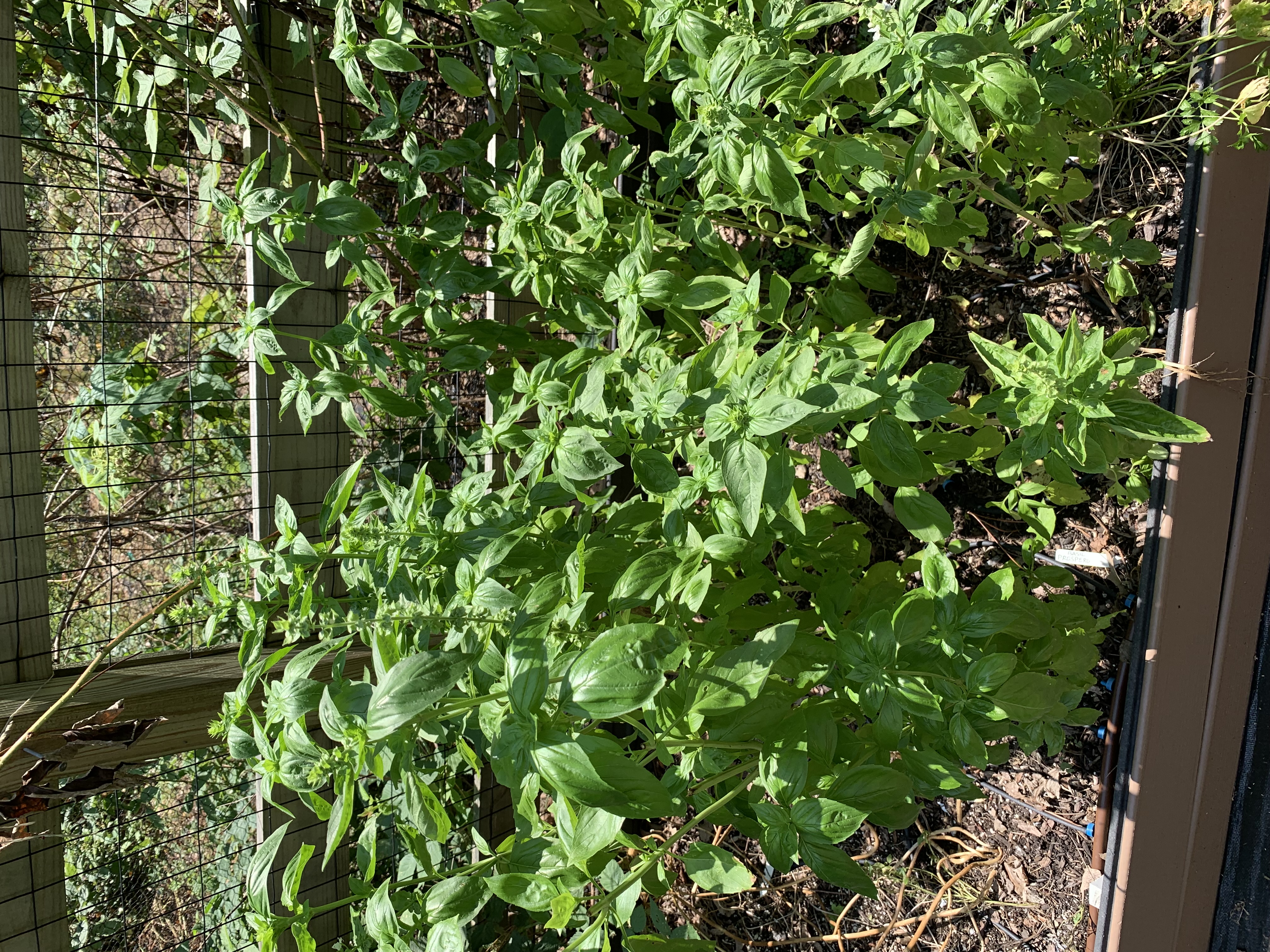Basil Bonanza

By Maria Price
This has been a great growing season for basil. It loves hot, humid weather with lots of rain and we’ve received lots of that, although other areas of the United States have suffered droughts.
If your basil is growing nice and lush, it’s time to harvest some to dry for winter use. Harvesting now will give it time to regrow more foliage before the first frost. Now is also a good time to gather leaves to make pesto to be frozen for later.
The familiar sweet fragrance of basil is made-up of estragole, linalool and eugenol. According to Arthur Tucker, professor of botany at Delaware State University, these compounds are fungistatic and act as antioxidants. Eugenol is also found in clove oil.
In the past, much of my Genovese basil would start losing its leaves and turn black due to a fungal disease known as Fusarium wilt. For the last couple of years, I’ve been growing a new variety called Prospera. It has been bred for resistance to Fusarium wilt and the highest resistance to downy mildew. Prospera Basil is available in three different types, bred for disease resistance, uniformity, traditional flavor, and appearance. Prospera Compact is outstanding for containers since there are short spaces between the leaves. It has a traditional Genovese aroma. Italian large leaf is fast growing with 4-inch-long leaves. Prospera DMR is a fast-growing classic Genovese. The plants have long stems suitable for field, greenhouse or container production. Purchase seed for these varieties at Johnny’s Selected Seeds.
Basil starts easily from seed and should only be set out after all danger of frost is passed. It’s good to prune basil so that it branches and to retard flower production. Flower initiation ends foliage production and begins seed creation and plant death. I cut the flowers off and save them for any recipe that calls for basil since they are edible, too.
You can preserve basil by drying it in an airy, dark location. You can freeze it blended in water and frozen into ice cubes. You can also preserve it as pesto.
Classic pesto is made with about 8 cups of fresh basil leaves, 1/2 cup parmesan, 1/4 cup walnuts, 2 garlic cloves, 1/2 teaspoon salt, and 3/4 cup extra virgin olive oil. Whirl it all in a food processor and enjoy over pasta.
